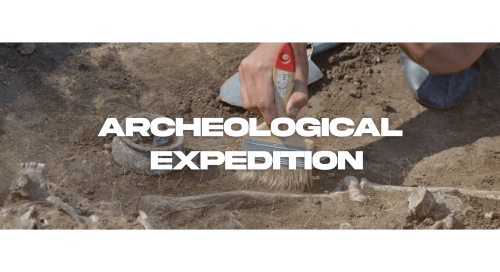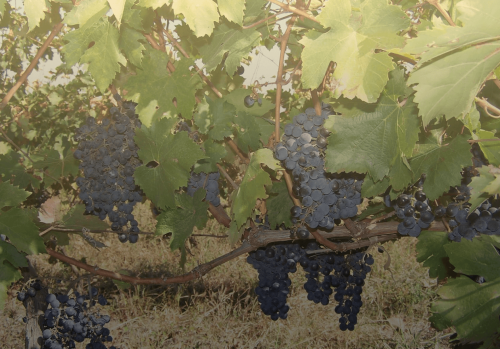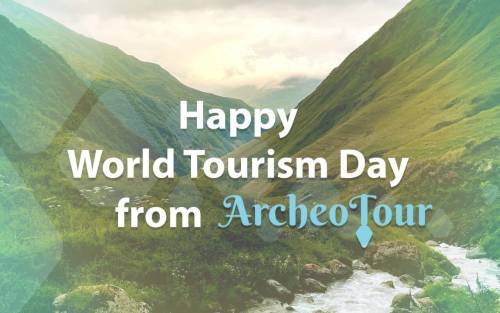Archaeological tours and excavations in Georgia

Also to see: All Inclusive One Day Archeology Tour to Dmanisi with Dinner and Wine
Archaeology refers to the study of human history using material remains. These objects can include any object that was created, modified or used by people.
Portable remains are often called artifacts. Tools, clothing, and decorations are all artifacts. features are non-portable remains such as pyramids and post holes.
Archaeologists study artifacts and features in order to understand how people lived at particular times. They want to find out what their daily lives were like, how they governed, and how they interacted with one another.
Sometimes, artifacts or features can be all that is needed to determine the history of an old community and/or civilization. Prehistoric Civilizations didn't leave behind written records so we can't read about them.
It is still difficult to understand why ancient cultures created the huge stone circles at Stonehenge in England, 5,000 years after the first monoliths were built. Stonehenge archaeologists don't have any manuscripts that can tell them how the feature was used by other cultures. They depend on the huge stones themselves - how they are arranged, and how the site has developed over time.
The Georgian National Museum has the "Archaeological Treasury" exhibition at Simon Janashia Museum in Georgia. This exhibition features examples of early Georgian Goldsmiths' work that were discovered in archeological excavations. These are representative of the evaluation of Georgian Culture from the 3rd Millennium BC to the 4th century A.D.
You can see more than 600 examples of Georgian goldsmiths' work, including diadems, head jewels, pendants for temples, earrings, bracelets and necklaces made of precious stones.
Kurgan Culture (3-2 BC)
In the rich kurgans of famous members of society in ancient Kartli and Kakheti, you will find jewelry, gold and silver items, as well as other ritual items, in the burial mounds.
"Golden Fleece Colkheti" (8-3 BC)
Colkhetian jewelry (diadems, temple rings, necklaces, bracelets etc.) The 5 th-4 th centuries BC, were discovered on the territory of the ancient kingdom of Kolkheti. This area was known as Colchis or the Land of the Golden Fleece by Greek explorers. Colkheti was also known as the Golden Fleece Land because of the burial mounds of nobles at Vani and Sairkhe.
Colkhetian works by goldsmiths date back 8 6 th years BC. This is when silver and gold jewelry returned after briefly disappearing in the record of material culture.
Picture from: Museum of Georgia
Picture from: Museum of Georgia
Kingdom in Kartli-Iberia (3 century BC- 4 century AD).
In an Akhalgori treasure in Eastern Georgia, we found examples of the goldsmith trade dating back to the 4 th-3 rd centuries BC. These items are believed to have been made by ancient aristocrats who lived in the area before the founding of the Kingdom Kartli Iberia.
The polychromatic Iberian silversmith works of polychromatic Iberian goldsmith were unique in their style and became a symbol for the Kingdom's power. The collection also includes works made in Italy and Iran.
The Bolnisi Museum combines traditional museum practices with contemporary technologies to show the history of the bio-cultural diversity of the area and its link to the global context.
The permanent display depicts the geography of the area, the evolution of agriculture, the history of early hominins, Bronze Age cultures, early Christian architecture, old Georgian inscriptions, and medieval stone and clay artifacts.
The exhibition's final chamber is devoted to the history of the South Germans who immigrated to Georgia 200 years ago, as well as to Kvemo Kartli as a multicultural area where Georgians and other ethnic groups such as Armenians, Azerbaijanis, Ossetians, Greeks, Russians, and Germans coexisted.
Important artifacts and archaeological finds from the local museum and the collections of the Georgian National Museum are displayed in the permanent show.
Picture from: Museum of Georgia
The first Humans in Georgia, Dmanisi
Dmanisi is the sole known location for the geographic species Homo georgicus, of the erectus grade, and is situated in the southern Caucasus area of the Republic of Georgia (see Figure 30.2). Both H. erectus and H. erectus georgicus are considered to be varietiesof Homo erectus
Homo georgicus
H. georgicus is dated to 1.8 mya, which is the same period as the oldest African material. Thus, it is believed to be either closely linked to Homo ergaster or possibly a descendant species of H. ergaster or possibly the ancestor of both Asian Homo erectus and H. ergaster.
H. georgicus showed a blend of erectus- and primitive-like traits. They had prognathic faces that resembled habilines and tiny, sturdy skulls. Their lower limbs and spines were more contemporary, but their top limbs resembled australopithecines. One of the four mature skulls only had a 546 cc cranial vault. Their large molars and microwear teeth indicate that they had a poor diet, which included eating tough, fibrous plant foods. They had unusually long teeth.
SOCIETY AND NATURE
It is believed that a mixture of steppes and forests existed in the region when H. georgicus was a resident. Along with faunal remnants, a large number of Oldowan tools and debitage (small chips of stone produced during the tool-making process) were discovered at the location. There is conjecture that they may have slept and hunted in trees due to their upper limb morphology, which is similar to that of an australopith, and the presence of dangerous predators at the site (de Lumley et al. 2005).
A guy who is older and edentulous is very intriguing. The fact that the alveolar bone had been resorbed and the tooth loss was antemortem indicates that the man survived for some time after he started losing his teeth (de Lumley and Lordkipanidze 2006).
Homo georgicus by Keenan Taylor.
During the intervening years, he would probably have required care, and his family or fellow members of the group had to have assisted and supported him. If true, this would be the oldest instance of kin selection or reciprocal altruism. In order to benefit relatives and increase their chances of survival and gene transmission because they share a part of your genes, kin selection entails paying a price for oneself. In essence, reciprocal kindness is tit for tat.
It shows why we will assist strangers. Prior to agriculture and sedentism, during our lengthy hominin past, our ancestors lived in small bands. By blood or marriage, they were connected to the people in their groups. If Person A spent money helping Person B, who is not a relative, there is a high chance that Person B will still be alive when Person A next needs assistance. Therefore, natural selection may have aided in the dissemination of the genes responsible for those cooperative behaviors. We are helpful, as were earlier hominins.
Who are Zezva and Mzia?
The first human jaw was discovered there in 1991 by a multinational team under the direction of David Lordkipanidze, director of the Georgian National Museum. Six people's fossil remains have been discovered at the Dmanisi location between then and 2007. Two of them have been assigned the Georgian names Zezva and Mzia (Georgian: ), and artists have recreated what they might have looked like.
.png)
They would have needed to be able to move quickly because they coexisted with predators like saber-toothed tigers, whose bones were also discovered at the location.
Over 13,000 square meters, or about 1%, of the Dmanisi site have been unearthed. Additionally, it is susceptible to weather, rain, and frost.
Lordkipanidze intends to construct a 2,000 square meter steel and glass dome to safeguard the location, extending the amount of time fieldwork can be done each year.
The dome will have a local laboratory to examine the discoveries and a local museum to accommodate the increasing number of tourists.
David Lordkipanidze says, "The world should recognize that we are preserving a world heritage, not just ours."
Vani Museum
Numerous artifacts found in the Vani settlement and its surroundings are displayed in the main exhibition of the renovated Vani Archeological Museum using new technologies and installations. These artifacts belong to the eighth to first centuries BC.
The Vani settlement, which spans almost the entire first millennium BC, is a globally significant archaeological site. Vani served as the spiritual hub of Kolkheti, the land of the Golden Fleece, from the eighth and seventh centuries BC to the first century BC. The materials found in the Vani village are essential for understanding ancient times.
Kolkhian jewelry from wealthy burial grounds is on display at the Vani Museum as indisputable evidence of the truth of Kolkheti's "Rich in Gold" reputation.
The French scholar Marie-Félicité Brosset published the first account of sporadic archaeological discoveries at Vani in 1851, and a sequence of notes in the Georgian press in the 1870s. Alexander Stoyanov oversaw the preliminary archaeological survey in 1889, and Ekvtime Taqaishvili oversaw it on a bigger scale in 1896 and from 1901 to 1903. Additional reconnaissance was carried out in 1936, and from 1947 to 1962, Nino Khoshtaria performed more systematic but sporadic digs. Following Otar Lordkipanidze's passing in 2002, Darejan Kacharava took over as director of the Center for Archaeology expedition, which began regularly excavating in 1966.
Name origin
Unknown is the name of the settlement discovered at Vani. There have been two opposing theories put forth. One, put forth by Nino Khoshtaria, links Vani to a Colchian settlement called Surium by Roman author Pliny the Elder in the first century AD. Ptolemy also makes reference to Surium. The Ravenna Cosmography pinpoints Surtum, a town, as being somewhere between Rhodopolis and Sarapanis in the center of Colchis, approximately where Vani was. Also found on a copper inscription from Vani is the toponym Souris. [22]
According to a different theory put forth by Otar Lordkipanidze, Vani is the location of the Leucothea sanctuary in Colchis that Strabo claims was taken over by Pharnaces II of Pontus and Mithridates of Pergamum.
Archeological Tours in Georgia
The enormous archaeological legacy in Georgia is the primary requirement for the growth of archaeological tourism. The earth here preserves traces of peoples and civilizations that once lived here, dating from the Stone Age to the late Middle Ages, in a distinctive fusion and diversity. In all historical eras, immigrants from Europe and Asia were drawn to the region's land by its mild temperature, fertile soils, wealth of mineral resources, and advantageous geographic location.
Because it can examine long-term changes in human communities, archeology stands out among the disciplines. It offers a way to investigate the human race's collective cultural legacy. Why are our biological and societal differences? Why did some countries prosper while others vanished into thin air? The basic questions about humanity that archaeologists are attempting to solve are listed below.
Many nations had their beginnings in prehistory. Few people, though, can go back as far as two million years. Georgia is regarded as a brand-new, little-known nation, making it intriguing for travel and tourism. After archeological excavations in 1999 led to the finding of ancient human remains dating to 1,700 000 BC (in Dmanisi), people's desire to see the country improves. We can now identify the gap in the theory explaining how people got from Africa to Europe.
Our archaeological excursions are primarily designed to introduce you to different historical, architectural, or cultural eras through visits to architectural landmarks, museums, historical routes, and sites of archaeological excavation. By taking such a tour, the traveler satisfies his desire to broaden his horizons, learns about cultural values, and acquires information voluntarily and without coercion.
Our cognitive tours will first and foremost appeal to archeology enthusiasts, but they will also pique the interest of anyone interested in learning more about the historical and cultural legacy of the regions of the country where the Great Silk Road traveled.
Discover History of Georgia with Archeotour!
Archeotour has many amazing expeditions around Georgia for those who are interested in Archeology and Ancient History. As we already mentioned, Georgia is the territory where the first humans lived and what is more interesting than the origin of humanity and where we come from?
We offer tours in the historical areas of Georgia. We are absolutely sure that this will be one of the most important, unforgettable experiences in your life!
If you are interested in exploring amazing sites in Georgia with the team of professionals of Archeotour - contact Info@archeotour.ge or Call us +995 593 27 24 36 - Our customer service is always ready to serve you!
We hope article was helpful to you!

1.png)
1.png)
1.png)
1.png)
1.png)
1.png)
1.png)
.png)
.png)
.png)
.png)
.png)
.png)
.png)
1.png)



